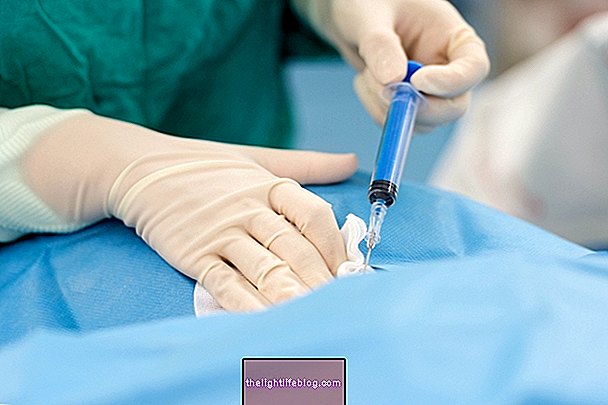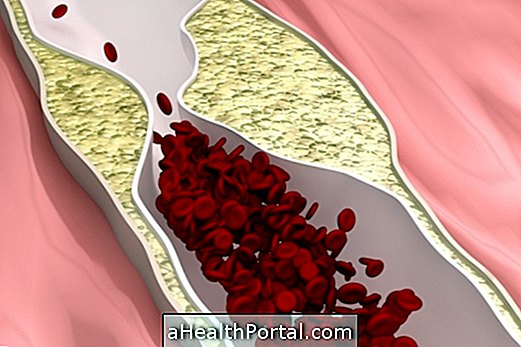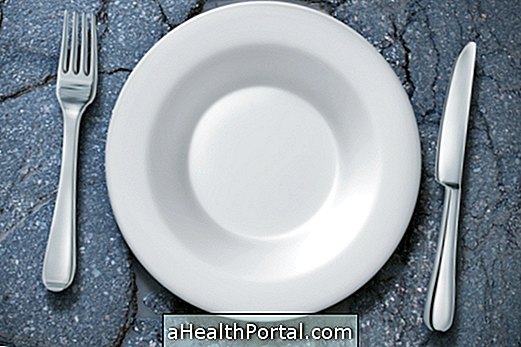The peripherally inserted central venous catheter, better known as the PICC catheter, is a flexible, thin and long silicone tube, between 20 to 65 cm in length, which is inserted into the arm vein until it reaches the heart vein and serves for administration of medications such as antibiotics, chemotherapy and serum.
PICC is a type of catheter that lasts up to 6 months and is performed on people who are undergoing long-term treatment, with injectable medications, and who need to collect blood several times. The PICC implantation procedure is done under local anesthesia in an outpatient clinic and the person can go home at the end of the procedure.

What is it for
The PICC catheter is recommended for people who need to do some kind of treatment that lasts a long time, because after being placed, it can last up to 6 months. It is a type of catheter that prevents the person from taking several bites, and it can be used for:
- Cancer treatment: used to apply chemotherapy directly to the vein;
- Parenteral nutrition: it is the supply of liquid nutrients through the vein, for example, in people with problems of the digestive system;
- Treatment of serious infections: consists of the administration of antibiotics, antifungals or antivirals through the vein;
- Contrast tests: used to administer injectable iodine, gadolinium or barium contrasts;
- Blood collection: carrying out blood tests on people with fragile veins in the arm;
The PICC can also be used for blood or platelet transfusions, as long as the doctor authorizes it and that nursing care is performed, such as washing with saline solution.
This type of catheter is not indicated for people who have coagulation problems, malformations in the veins, cardiac pacemakers, burns or wounds where it will be inserted. In addition, people who have had a mastectomy, that is, who have removed a breast, will only be able to use the PICC on the opposite side where they had the surgery previously. See more about recovery after breast removal.
How is done
The implantation of the PICC catheter can be done by a cardiovascular doctor or qualified nurse, it lasts an average of one hour and can be done in an outpatient clinic, with no need for admission to a hospital. Before starting the procedure, the person is accommodated on a stretcher, having to keep their arms straight.
After that, an antisepsis is performed to clean the skin and anesthesia is applied to the place where the catheter will be inserted, which, in most cases, is in the region of the non-dominant forearm, close to the fold. The doctor or nurse may use ultrasound throughout the procedure to view the path and the caliber of the vein.
Then, the needle is inserted into the vein and inside it the flexible tube is inserted, which goes to the vein of the heart, causing no pain to the person. After the introduction of the tube, it is possible to verify that there is a small extension out, which is where the drugs will be administered.
At the end, an X-ray will be done to confirm the location of the catheter and a dressing is applied to the skin to prevent infections, just as it is done after a central venous catheter is performed. Learn more about what a central venous catheter is.

Main care
The PICC catheter can be used by people undergoing outpatient treatment, so people often go home with the catheter in their arm. However, some precautions are necessary such as:
- During the bath, it is necessary to protect the region of the catheter with plastic film;
- Do not use force with your arm, avoiding catching or throwing heavy goals;
- Do not dive into the sea or pool;
- Do not check blood pressure in the arm where the catheter is;
- Check for the presence of blood or secretion at the catheter site;
- Always keep the dressing dry.
In addition, when the PICC catheter is used in the hospital or clinic for treatment, care is performed by the nursing team, such as washing with saline, checking the return of blood through the catheter, observing signs that indicate infection, changing the cap at the tip the catheter and change the dressing every 7 days.
Possible complications
The PICC catheter is safe, however, in some cases, complications can occur, such as bleeding, cardiac arrhythmia, blood clots, thrombosis, infection or obstruction. These complications can be treated, but often, the doctor recommends removing the PICC catheter to prevent other health problems from arising.
Therefore, if any of these signs appear, or if you experience fever, shortness of breath, palpitations, swelling in the area or if an accident happens and a part of the catheter comes out, you must contact a doctor immediately.
Was this information helpful?
Yes No
Your opinion is important! Write here how we can improve our text:
Any questions? Click here to be answered.
Email in which you want to receive a reply:
Check the confirmation email we sent you.
Your name:
Reason for visit:
--- Choose your reason --- DiseaseLive betterHelp another personGain knowledge
Are you a health professional?
NoMedicalPharmaceuticalsNurseNutritionistBiomedicalPhysiotherapistBeauticianOther
Bibliography
- MAYO CLINIC. Peripherally inserted central catheter (PICC) line. Available in: . Accessed on 11 Nov 2019
- DI SANTO, Marcelo K. et al. Peripherally inserted central venous catheters: alternative or first choice in vascular access?. J Vasc Bras. Vol.2. 16.ed; 104-112, 2017
- CLEVELAND CLINIC. Peripherally Inserted Central Catheter (PICC): Risks / Benefits. Available in: . Accessed on 11 Nov 2019
- INSTITUTE OF HEALTH AND HOSPITAL MANAGEMENT. Protocol for installation, maintenance and removal of the PICC peripherally inserted central venous catheter. 2015. Available at:. Accessed on 11 Nov 2019
























